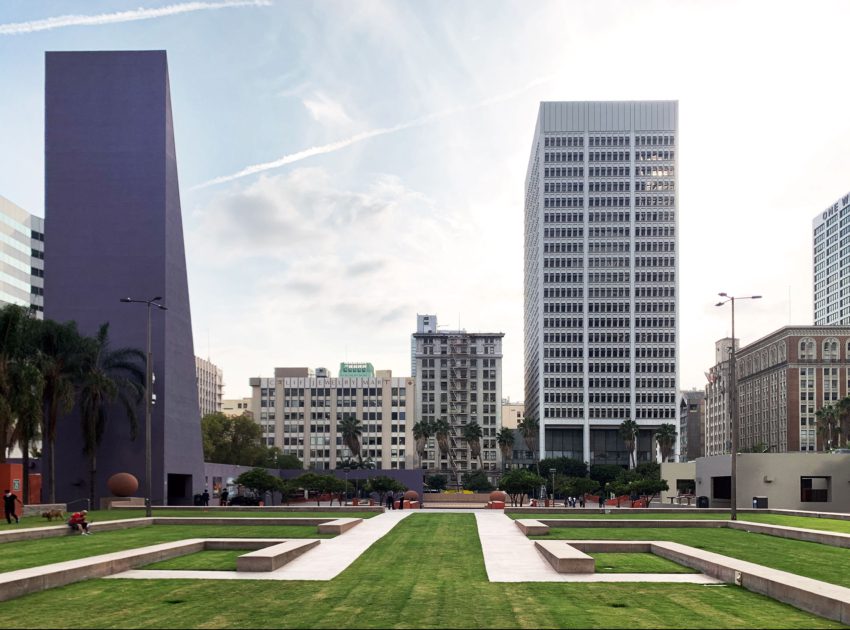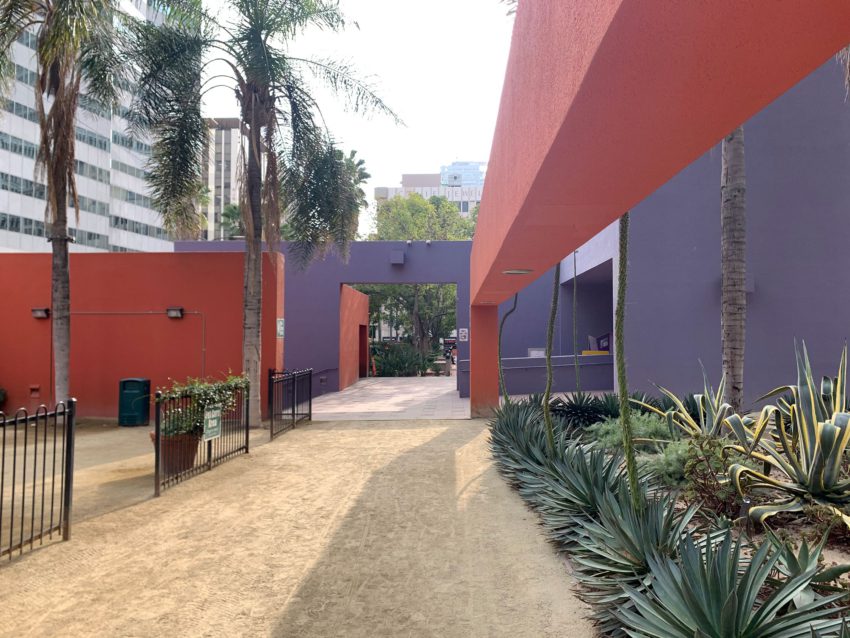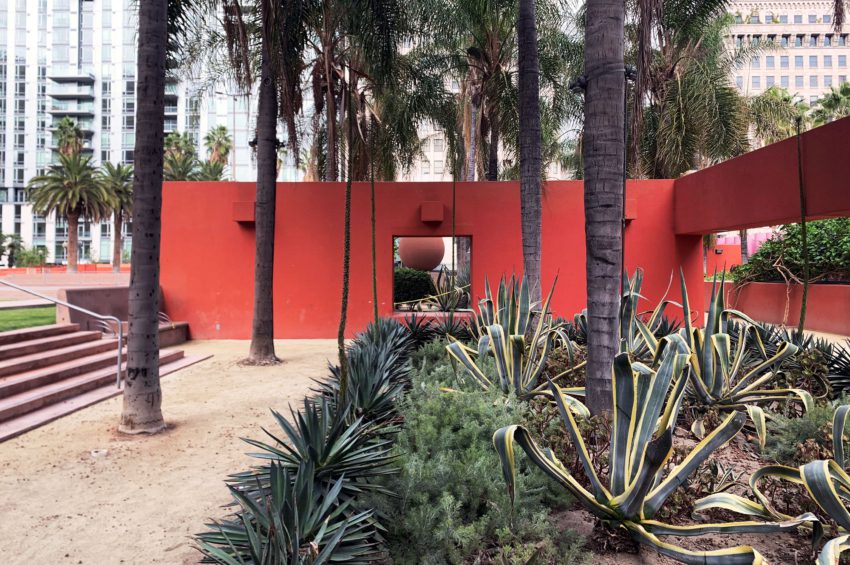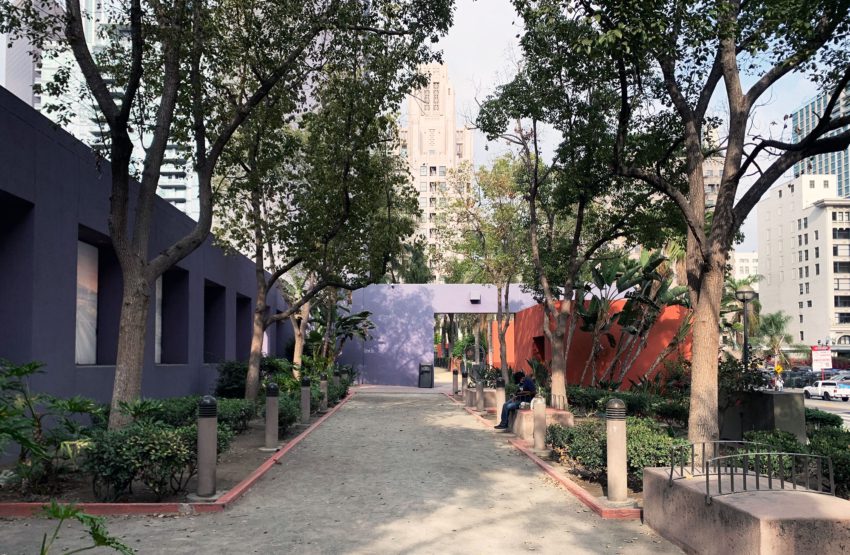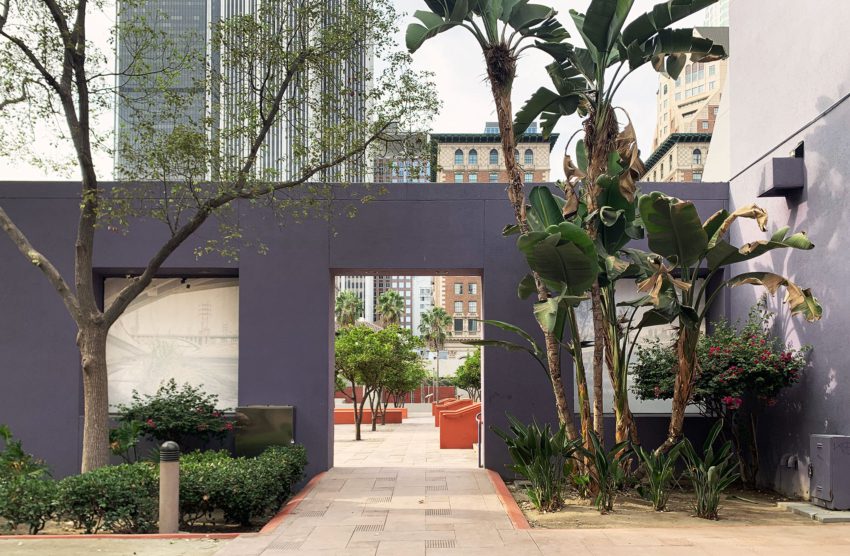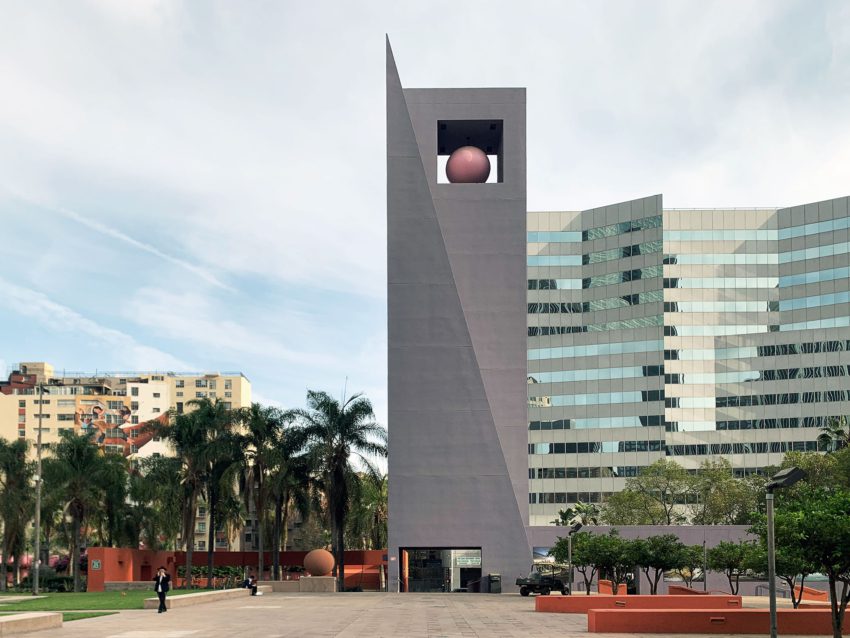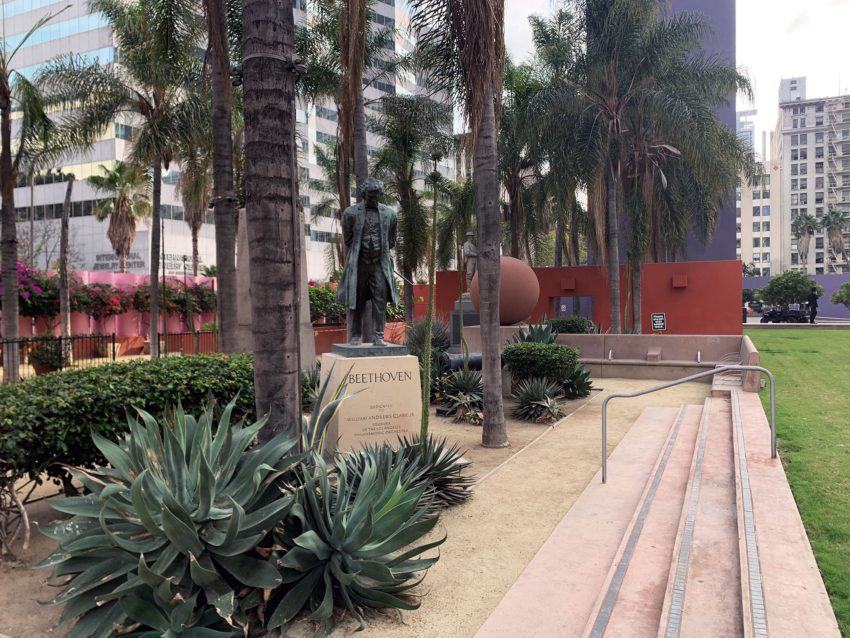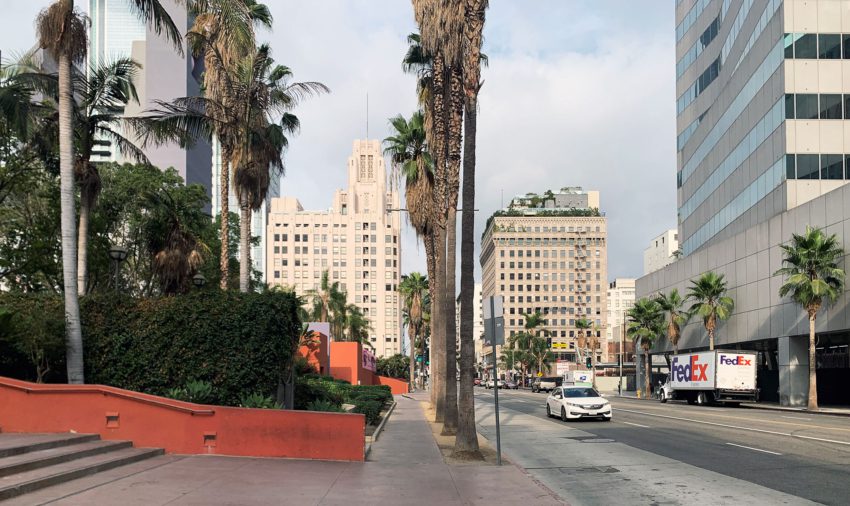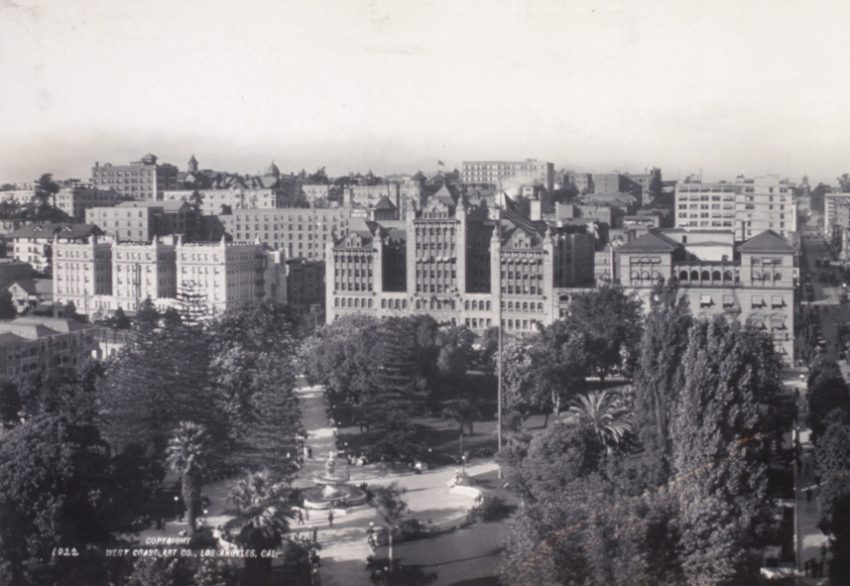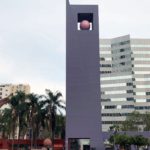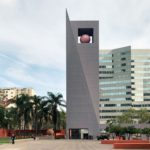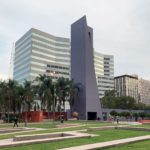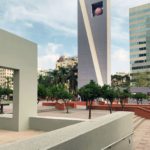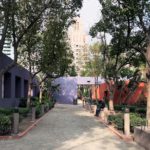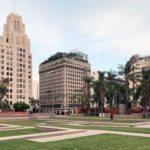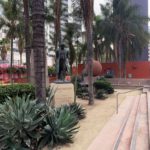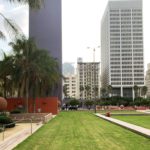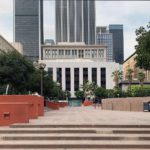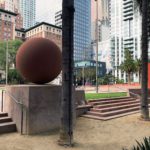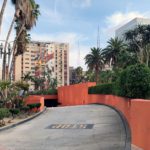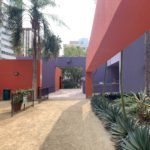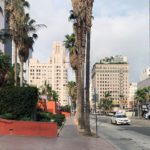In 1993, renowned architecture firm Legorreta + Legorreta, in collaboration with landscape architect Laurie Olin Architects, completed the final renovation of Pershing Square in the heart of Downtown Los Angeles. The five-acre public park has a rich history dating back to 1781 and now sits atop a large underground parking garage. The renovation project included the creation of a series of terraced garden spaces, a large central fountain, and a performance stage, all of which provide a welcoming oasis in the midst of the bustling city. The design reflects the firm’s signature use of vibrant colors, bold forms, and carefully crafted spatial experiences.
Pershing Square in DTLA Technical Information
- Architects: Legorreta + Legorreta
- Landscape Architect: Laurie Olin
- Executive Architect: Robinson Mills & Williams
- Location: 532 S Olive St, Los Angeles, USA
- Style: Postmodern
- Topics: Public Space, Color in Architecture
- Area: 20,000 m2
- Budget: $14.5-million
- Project Year: 1993
- Photographs: © ArchEyes
To a certain extent, the constant evolution of Pershing Square is really a part of its history, and part of its identity. This is a space that has continually evolved throughout its history, for better or for worse.
– Sara Hernandez1
Pershing Square Photographs
History of Pershing Square
The five acres that makeup Pershing Square are original pueblo lands whose ownership can be traced back to 1781 when Spain granted them to the City of Los Angeles. In 1866, the area was set aside as a public park known as La Plaza Abaja (“The Lower Plaza”). Improvements, including the planting of cypress and citrus trees, were made to the park in the 1870s.
In the 1880s, city engineer Fred Eaton created the park’s first official layout. During Los Angeles’ real estate boom of 1910-11, architect John Parkinson redesigned the park in a formal Beaux-Arts style. In 1918, one week after World War I, the square was renamed in honor of General John Pershing, commander of the American armed forces overseas.
Over the ensuing decades, various design changes were made to the square, most notably the addition of an underground parking garage in 1951. As a result, the lush landscaping that had characterized the park for the last eight decades was removed. Trees were placed into planters, and small flowerbeds were installed.
With access ramps to the garage effectively cutting off the park from the surrounding area, the square gradually fell into disuse and disrepair throughout the 1960s and ’70s. In 1984, it was cleaned and replanted for the Olympics, but almost a decade later, the square received a complete facelift.
Over the ensuing decades, various design changes were made to the square, most notably the addition of an underground parking garage in 1951. As a result, the lush landscaping that had characterized the park for the last eight decades was removed.
Pershing Square Renovation
In 1992, the park was closed for a significant redesign and renovation by Mexican architect and landscape architect Ricardo Legorreta and U.S. landscape architect Laurie Olin. The redesigned park opened in 1994 with an impressive 10-story purple bell tower and artistic interpretations of the city’s history and culture, such as the walkway representing an earthquake fault line by artist Barbara McCarren.
As the architect mentioned, the block was too large to function as a single symmetrical space. Therefore, it was transformed into two wide squares linked to the East-West passage’s surrounding context. The change in level from North to South is solved through a wide ramp and steps along this centerline. The plaza’s focal point is the 38-meter tower, which, at the base, has water running and causing a tidal action every eight minutes.
Two bright yellow buildings form the connection between the north and south squares: one, the triangular-shaped transit center, and the Pershing Square cafe overlooking the bustling park.
In the north square, the brightly painted walls of different sizes define spaces and create meeting places. The walls are perforated in the shape of squares, rectangles, and circles to create windows that are framed in shades of pink and purple. Giant spheres, a symbol of Legorreta Arquitectos and palm trees, identify and shape spaces.
Pershing Historic Photograph
Pershing Square Image Gallery
- © ArchEyes
- © ArchEyes
- © ArchEyes
- © ArchEyes
- © ArchEyes
- © ArchEyes
- © ArchEyes
- © ArchEyes
- © ArchEyes
- © ArchEyes
- © ArchEyes
- © ArchEyes
- © ArchEyes
- © ArchEyes
- © ArchEyes
- © ArchEyes
- © ArchEyes
- © ArchEyes
- © ArchEyes
- © ArchEyes
- © ArchEyes
- © ArchEyes
- © ArchEyes
- © ArchEyes
- © ArchEyes
- © ArchEyes
About Legorreta + Legorreta
Since its founding in 1965 by Ricardo Legorreta, Noe Castro, and Carlos Vargas, the firm has remained true to its original goal of creating the best architecture inspired by human values. Achieving functionality, efficiency, and cost control, they design friendly and social environments with atmospheres that convey peace, privacy, and optimism.
Other works from Legorreta + Legorreta
About OLIN
OLIN is an international landscape architecture, comprehensive planning, and urban design firm founded in Philadelphia in 1976 by Laurie Olin and Robert Hanna. The firm work is predicated upon social engagement, craft, detail, materiality, and timelessness.
- Sara Hernandez – Special Counsel to Los Angeles City Council – Interview by Frances Anderton at KCRW titled L.A. Galleries Head to Art Basel, Pershing Square Redesign?
[cite]

